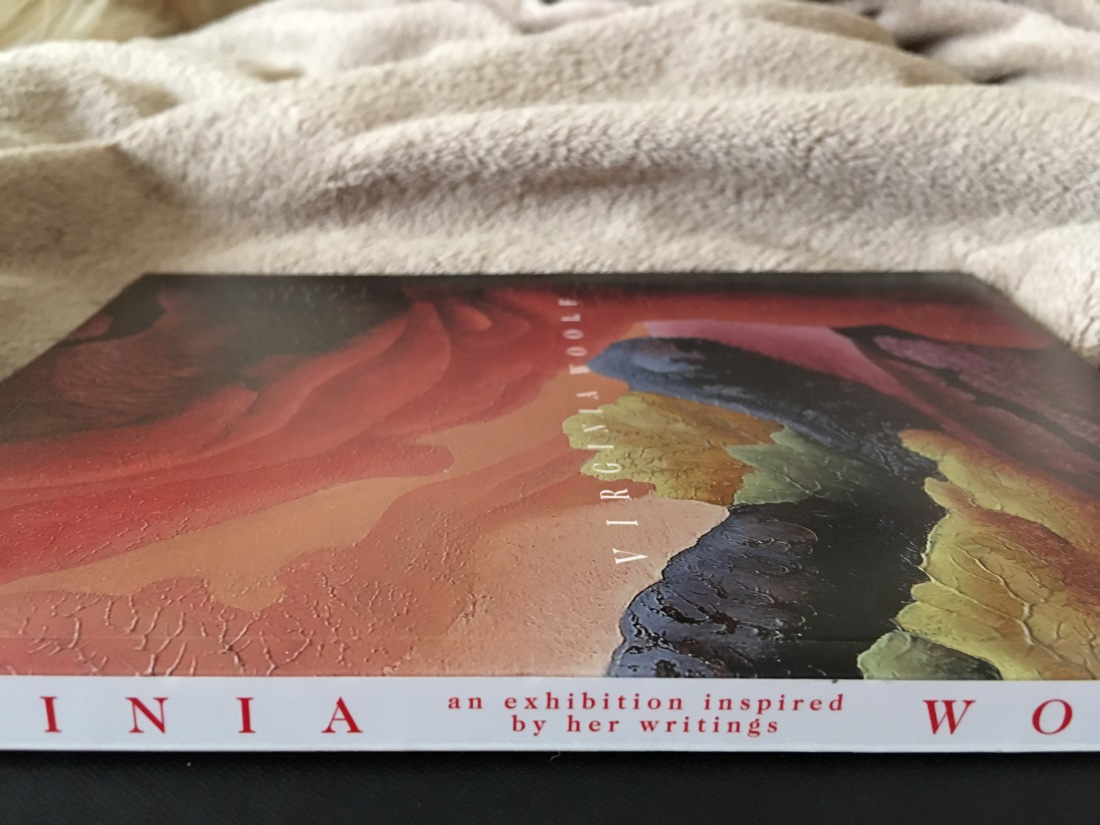 Virginia Woolf Exhibition – the Fitzwilliam Museum, Cambridge 27/11/18
Virginia Woolf Exhibition – the Fitzwilliam Museum, Cambridge 27/11/18
This is a fascinating exhibition* which has been on a UK tour. Talking to museum staff I understand that it is unusual and quite unique in its format. Certain aspects of Woolf’s characteristics are examined in respect to her diary and essay writings. The unique aspect is that works by C20 and 21 st artists who show similar traits are shown along side. As many of the complimentary exhibits are portraits this fits perfectly into my current module studies and the theme occurring in my mind around how artist’s emotion effects work.I was captivated by the incite that this gives.
On a personal note, I am very encouraged to have made this second visit to a gallery and I have been able to look at work with a more critical appraisal and in a way that will inform my own process. I think this development is happening as a result of my growing confidence resulting from module exercises, direction from my tutor and the experience of a virtual study visit.
My practice has been changed by this visit because no photographs were allowed. Being forced to make on -the -spot notes and descriptions of paintings and drawings has made me think more deeply ablout what a I appreciate and what main features show through in each one.
after leaving the exhibition I sketched some of the portraits which affected me most to see what I could remember. I was inspired for once to buy the catalogue and below are the results of what I described and could recall from this. A really useful exercise to see what I already focus on and where I need to concentrate my future looking!
Notes:
Self portraits- Woolf’s writings portray her as a strong female who was active in following her convictions ( e.g. Suffragette movement)
Francis – lisa McGrun 1983 :line and brush clean no shadow or tone except heavier lip and eye lines chin horizontal line eye line a bracket filled in eyes down turned broken line nose. A line only portrait which is extremely effective and reveals a strong image of the artist.

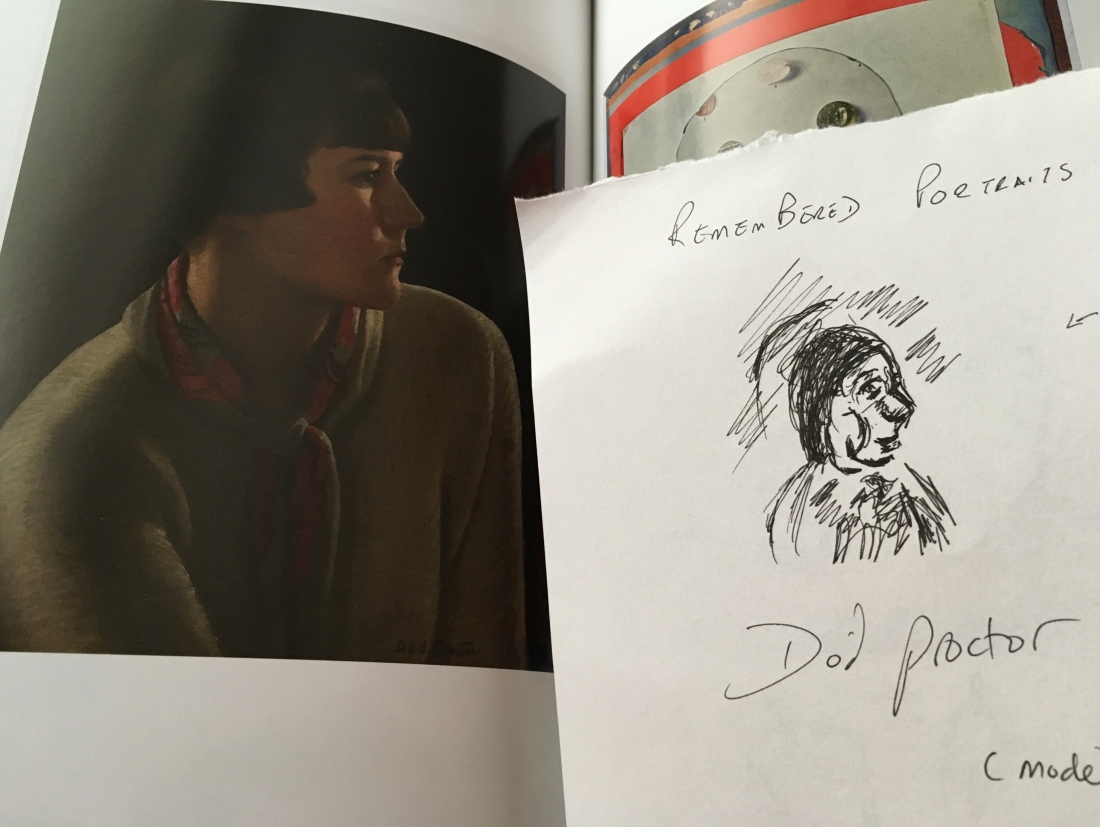
Dod proctor 1920 -oil side view. She was a member of the newlyn school. This work illustrates cornish white light hilights on cheek as an hourglass below near eye, on the forehead and near arm and far arm. Beautiful contrast to dark background and simple hair structure plain jumper compliments simple image.
Late venessa bell texture and tone and heavy brush strokes shows vulnerability, dark shadows show a weariness to me. This may be because it is hung between young clean images of Proctor and John.
Gwen john 1902 pale skin and hard lines on bone structue and eyebrows show strength yet softness through femminine red dress
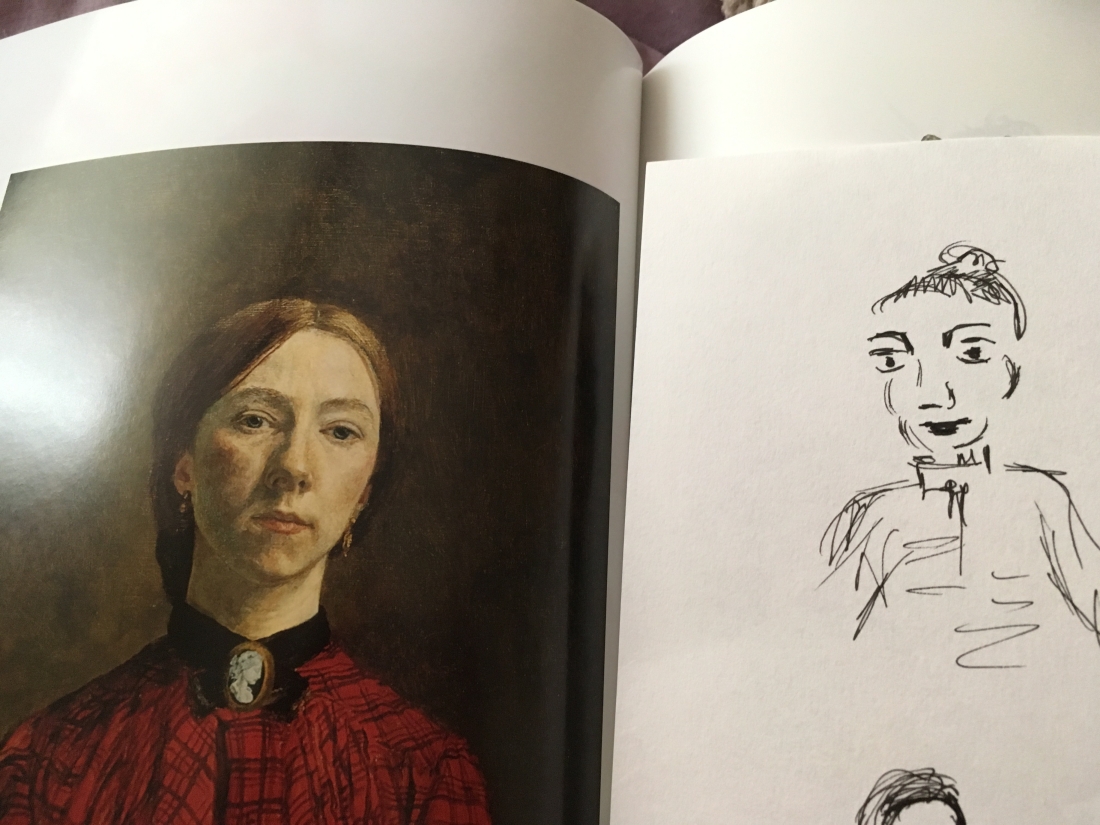
Dora carrington life sculpture nude climbing statue. These are an early example of performance art photographs! Carrington
Suffragette memorabilia- in out of prison game! And hat pin designs downing st and the holloway! Grim sense of humour!
Portraits
Romaine brooks 1908 the white bird full length white dress and white face no red or shade on cheeks or shadow on face stark b and w effective and whan look but black emphasis on bone structure gives character and a sense of strength.
Laura knight- joan rhodes 1955-oil cheeks and side pose using pastel colours show vulnerability with contast to sculpted and contoured bone structure Indicating strength.texture lines indicate light hilights on hair and clothes detail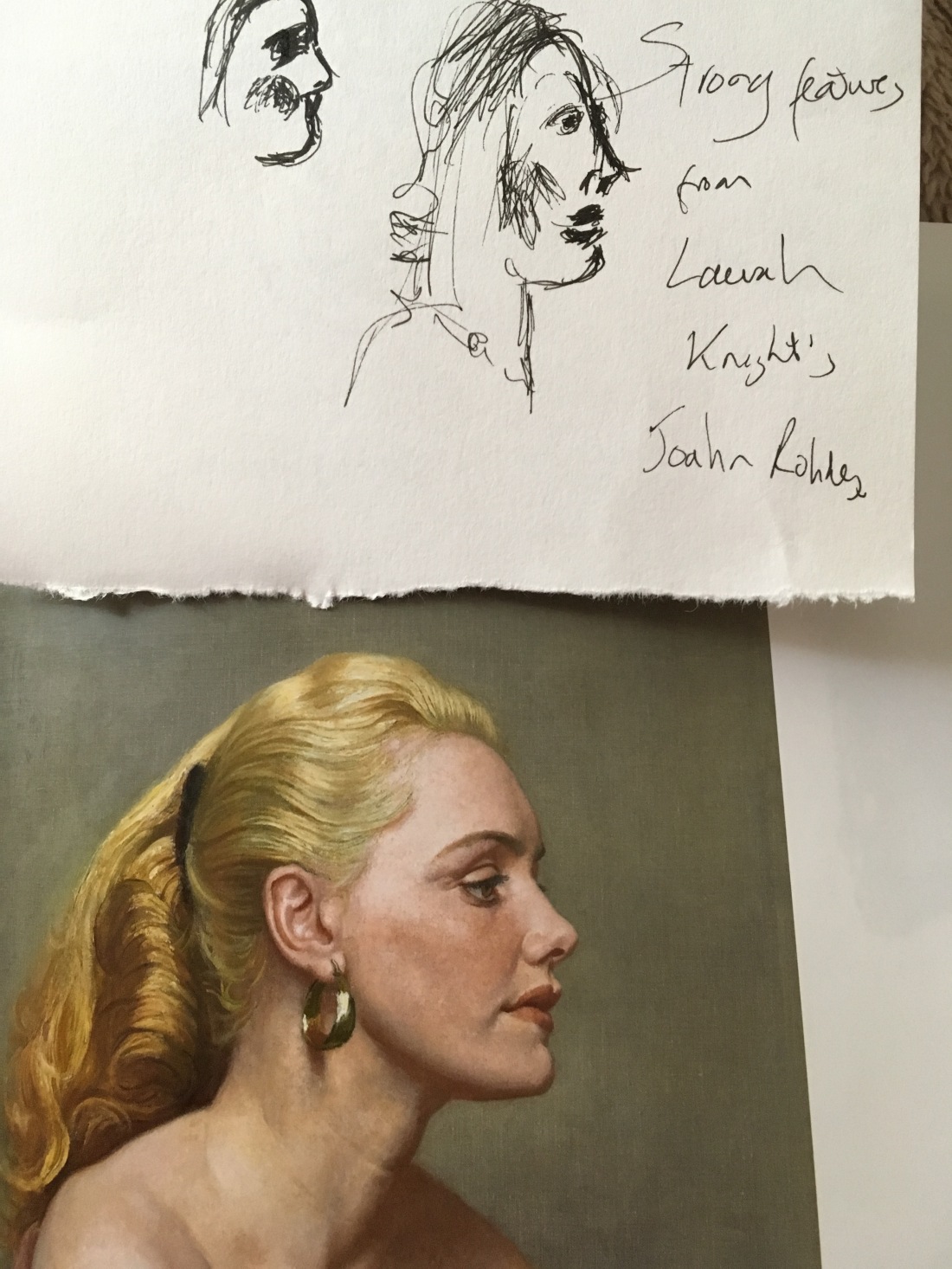
Ithel colquhoun the alcove 1946 decalcoman surealist technique paint squeezed between two paper layers to create mirror image
Georgina houghton surrealist spiratualist gouache and watercolour in sketch book with pen and ink added complex layered claimed influence by spirituality voices but certainly have energy
Lucy stein book of shadows 2017 – oil,charcoal and collage on canvas similarity to Woolf’s work splintered personalit. This is referenced in her essay’ a room of ones own’ 1920. She described life as inhabiting rooms in a house. This metaphor describes her thoughts on female artists at the time who were struggling to get into rooms and be recognised and on another the different parts of. Her personality and characteristics lived in different room in her house. In a similar vein stein refers ‘to her and not her’ and one critic sees her image as a contrast of’ beautiful and horror ‘ and explores personal and art hostory in a confessional, delerious way, “my body of work is also my body dissceminated”.
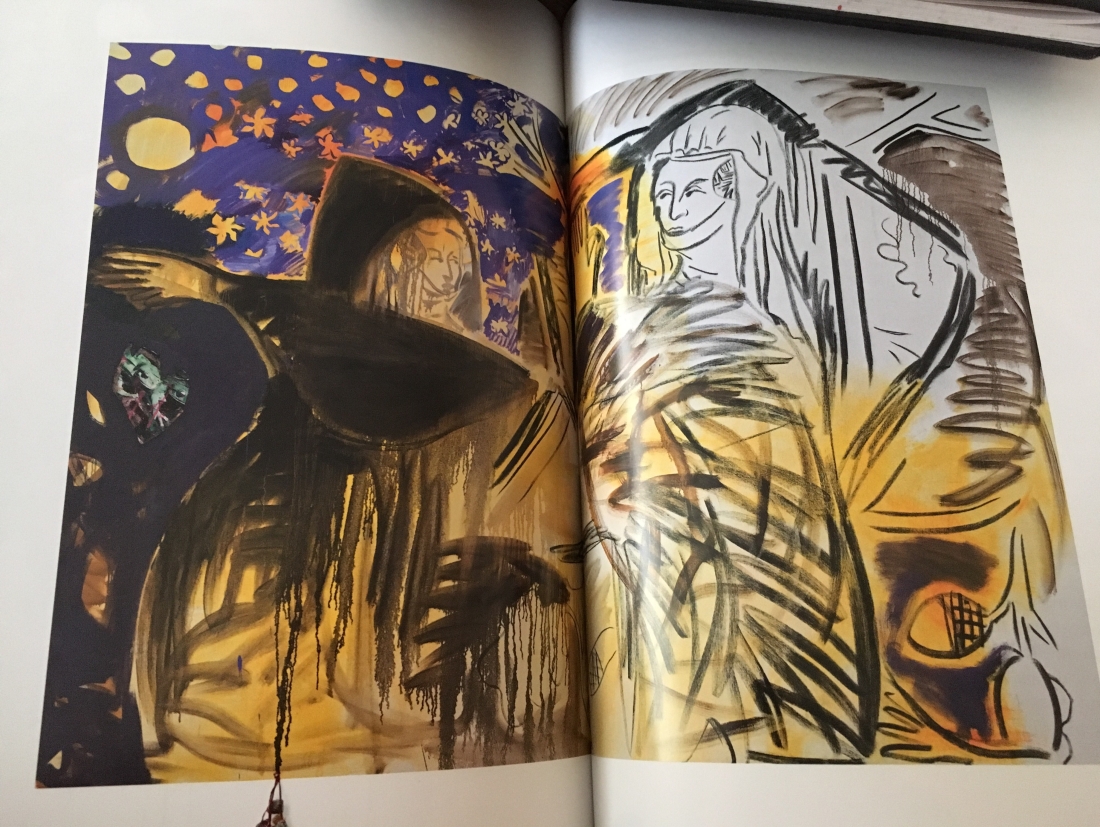
Emma talbot 2016 acrylic on silk banner- interpreting my dreams.With a pattern framing a cartoon and word pictures- unconscious narrative in speech bubbles which interpreted her dreams. This is a striking work- a wall hanging which seems to connect well with ‘ ordinary ‘ people in this format but it is also a character portrait of
Vw essay a room of ones own 1920 paralells rooms to creativity of women and different rooms as different splinters of personality
I really love Issy Wood’s portrait patcel guilt 2017. This portrait is strange as it does not show facial features- the most strong way to represent human recognition and identity. Is Wood trying to say that the figure is feeling guilty and lacks self confidence? That they have no awareness of their identity? The breast foreshortened and prominent so suggests womanhood and perhaps this is the figures only perceived worth? The fading of the hair and body could suggest movement or perhaps fading of the woman into the background? It feels sonehow a very raw work and yet it is franed by suggested long wavy hair and the femininity of the breast.Each if my interpretations are of vourse personal and based on my own experiences but I am certain that the artist has used the devices I have discussed to provoke thought in the viewer and this for ne makes a powerful piece of art as much as technical ability. I find my self drawn to the work of Wood, Stein and McGrun for the energy and sense of the artist’s presence. This sense is also present in Proctor and Knight’s strong featured women. The latter two are prettier and more traditional in their feel but they also use artistic devices to portray feelings in an appropriate way for their earlier tome period. E.g. Proctor’s slightly unvonventional bright cornish light and simple sharp head with minimal tone and Knights almost harsh treatment of her subjects large jaw bone showing power in the sitter but subtly feminised by delicate pastel volouring. 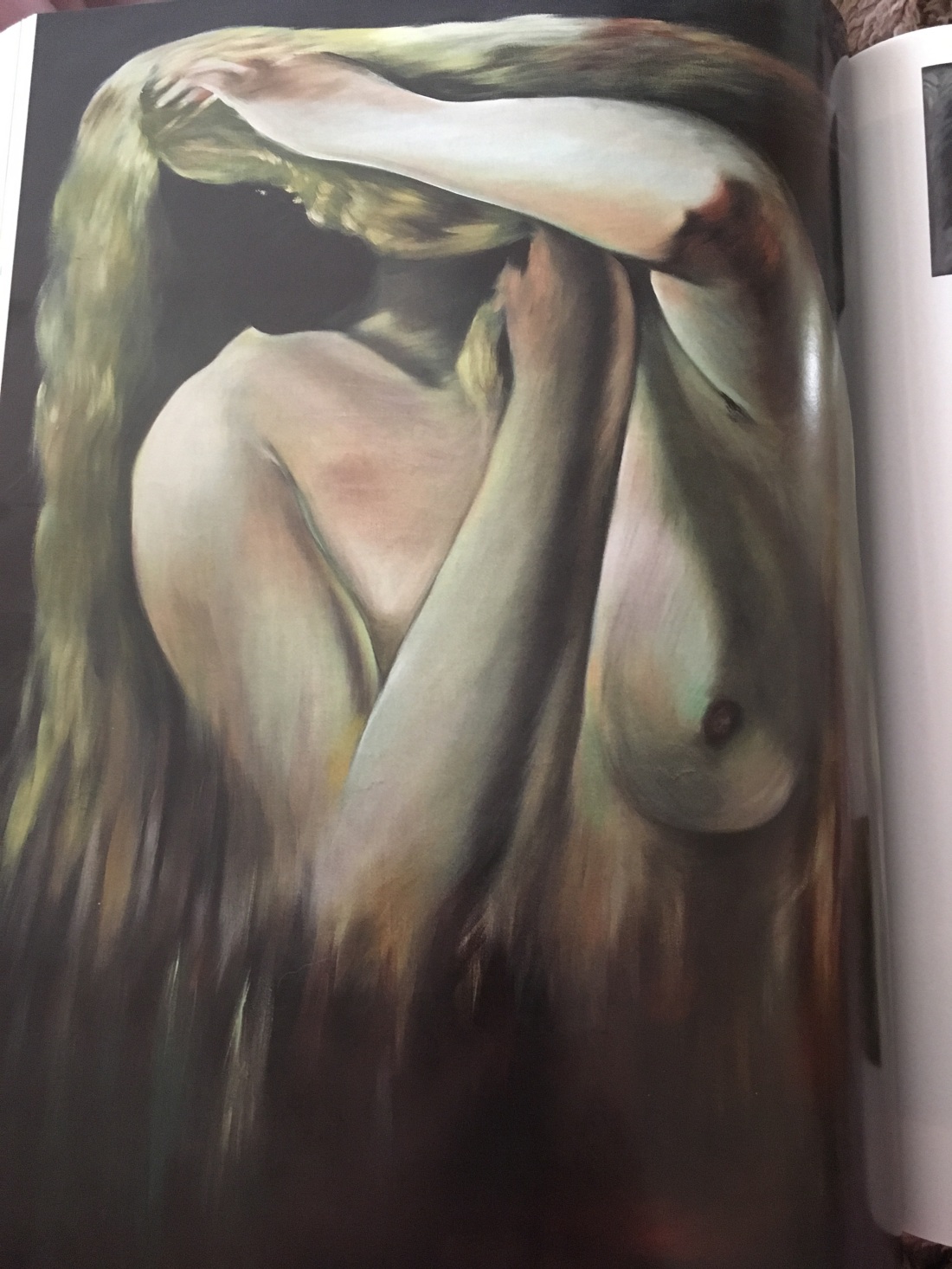
Vw nature and women comparison metaphores. Comparison to women land art nancy holt, marie yate
Many of laura knight’s works have detailed figures to side of sea- yet not out of proportion power of nature eg dark pool and autumn light at sennan
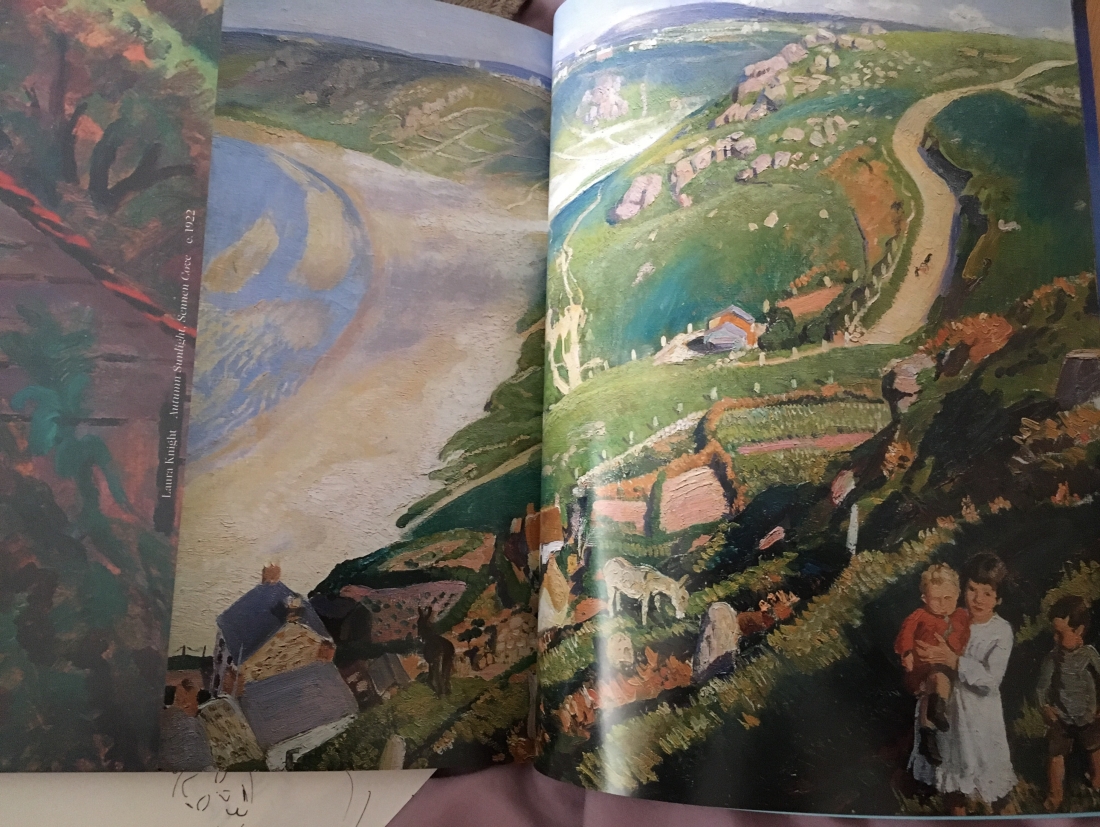 Vw blend with elements ‘ being the wind or sea
Vw blend with elements ‘ being the wind or sea
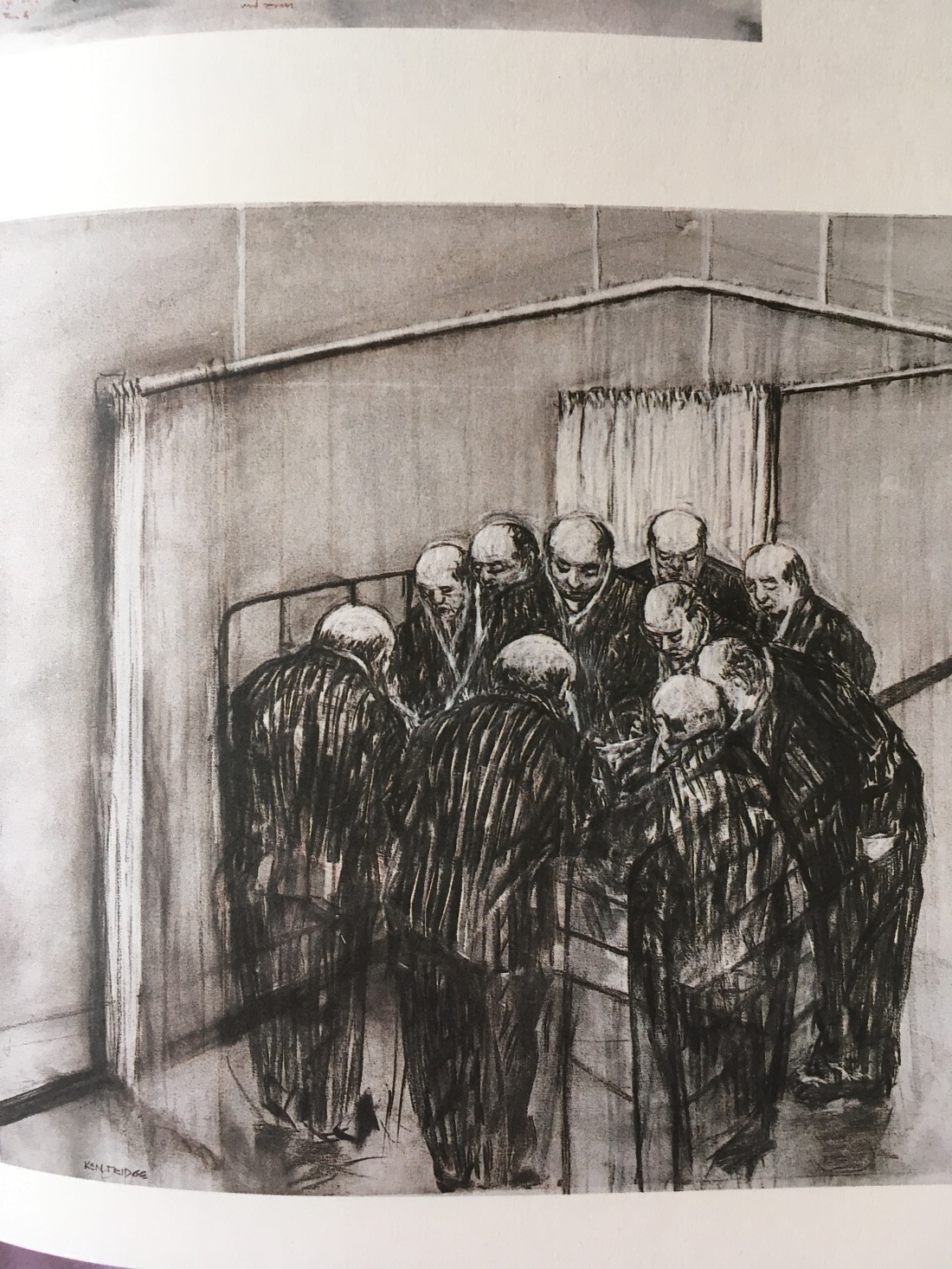

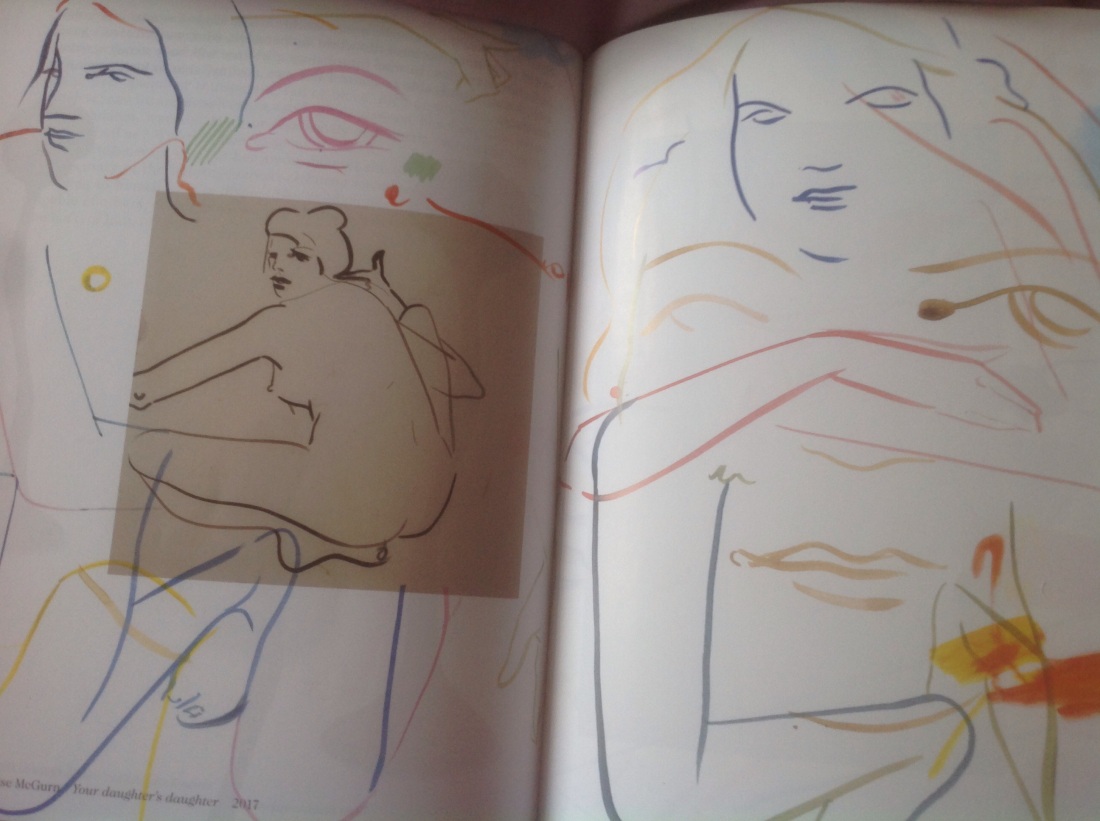
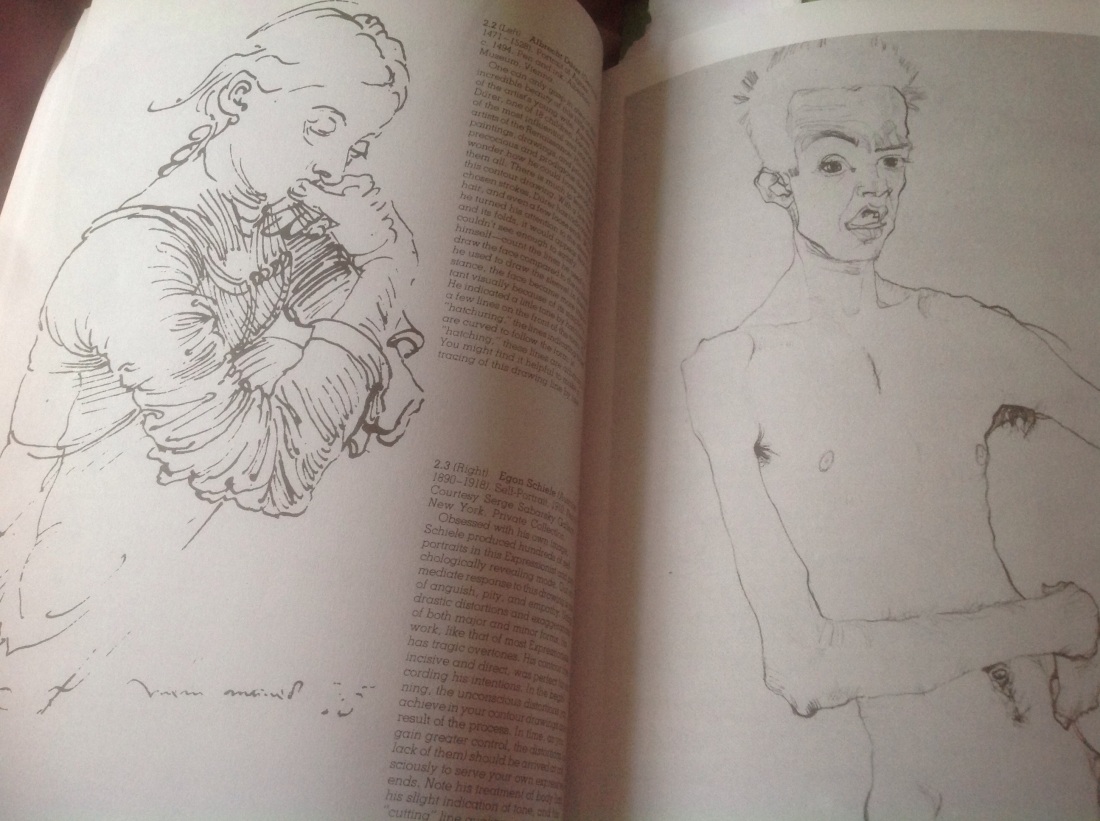

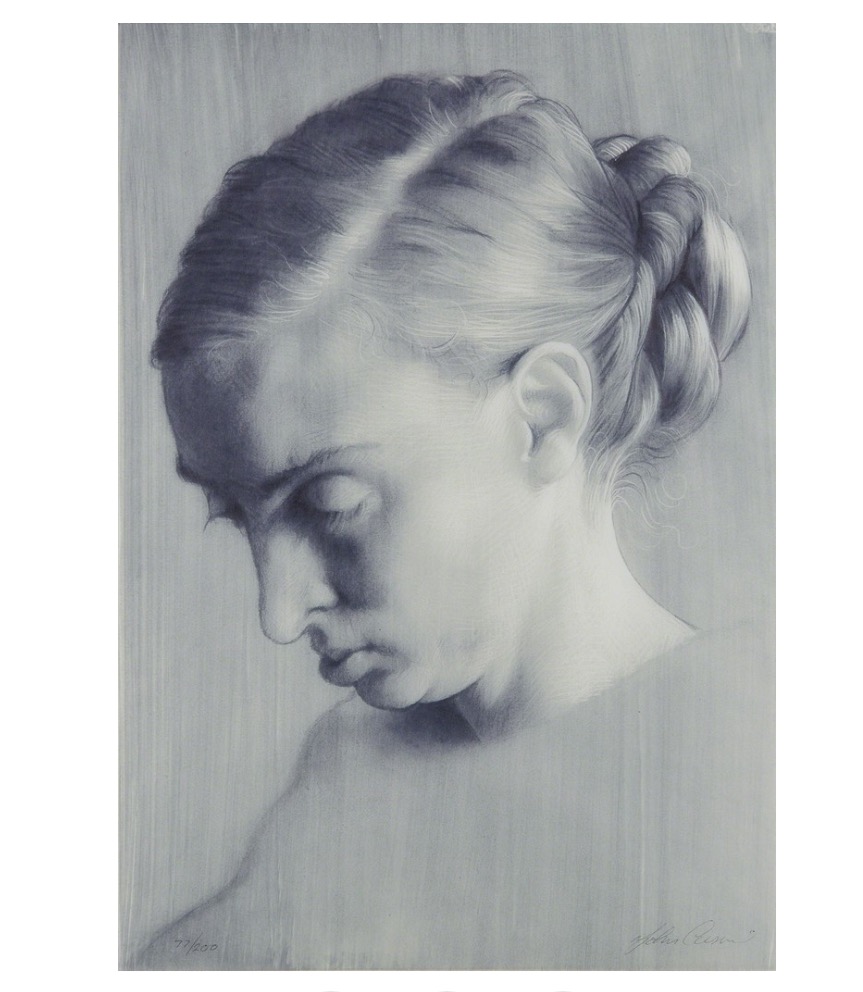 I imagine that the choice to showcase such varied styles physically ( brown paper female and Rachel as hag) and to tease the viewer psychologically ( beauty and groteaque ) is part of Currin’s drive as an artist. He is capable of sensitive pencil work but often chooses to shock – even in his blue pencil portraits of his wife he titles the picture ‘ Rachel as a hag’. This shock value is best explained by looking at his painted figurative portraits. His paintings disturb me as the most common theme is candy sweet pictures often with a message of gratuity in sex. I cannot help wondering if the critics’ interpretation that he is joking with us is true or whether there is a personal anxiety that he is dealing with through his work. In fact in a 2009 interview with the New Yorker he states that his response to the ‘ european’ master nude style overwhelms him in its seeming perfection and he feels it is more than he can achieve. His self doubt triggers his response to ‘ regress’ in his portrayals to saucy seaside beauties. This is sad as every artist has the right to be confident in their own style. He feels that what he calls his ‘porn’ nudes is a phase which he must work through. It would be wrong to question his decision to follow his passion but it seems to me a waste of his obvious talent. He himself self says that he cannot allow his young family to see this work.
I imagine that the choice to showcase such varied styles physically ( brown paper female and Rachel as hag) and to tease the viewer psychologically ( beauty and groteaque ) is part of Currin’s drive as an artist. He is capable of sensitive pencil work but often chooses to shock – even in his blue pencil portraits of his wife he titles the picture ‘ Rachel as a hag’. This shock value is best explained by looking at his painted figurative portraits. His paintings disturb me as the most common theme is candy sweet pictures often with a message of gratuity in sex. I cannot help wondering if the critics’ interpretation that he is joking with us is true or whether there is a personal anxiety that he is dealing with through his work. In fact in a 2009 interview with the New Yorker he states that his response to the ‘ european’ master nude style overwhelms him in its seeming perfection and he feels it is more than he can achieve. His self doubt triggers his response to ‘ regress’ in his portrayals to saucy seaside beauties. This is sad as every artist has the right to be confident in their own style. He feels that what he calls his ‘porn’ nudes is a phase which he must work through. It would be wrong to question his decision to follow his passion but it seems to me a waste of his obvious talent. He himself self says that he cannot allow his young family to see this work.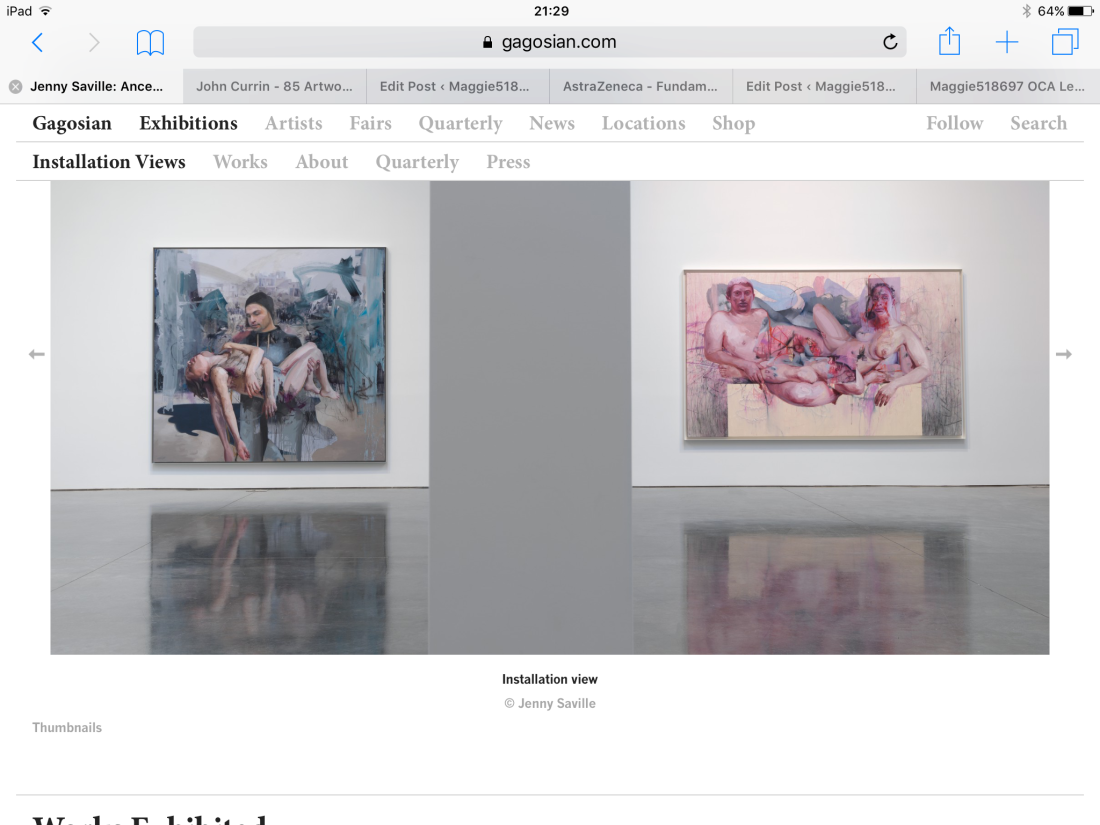
 Virginia Woolf Exhibition – the Fitzwilliam Museum, Cambridge 27/11/18
Virginia Woolf Exhibition – the Fitzwilliam Museum, Cambridge 27/11/18





 Vw blend with elements ‘ being the wind or sea
Vw blend with elements ‘ being the wind or sea